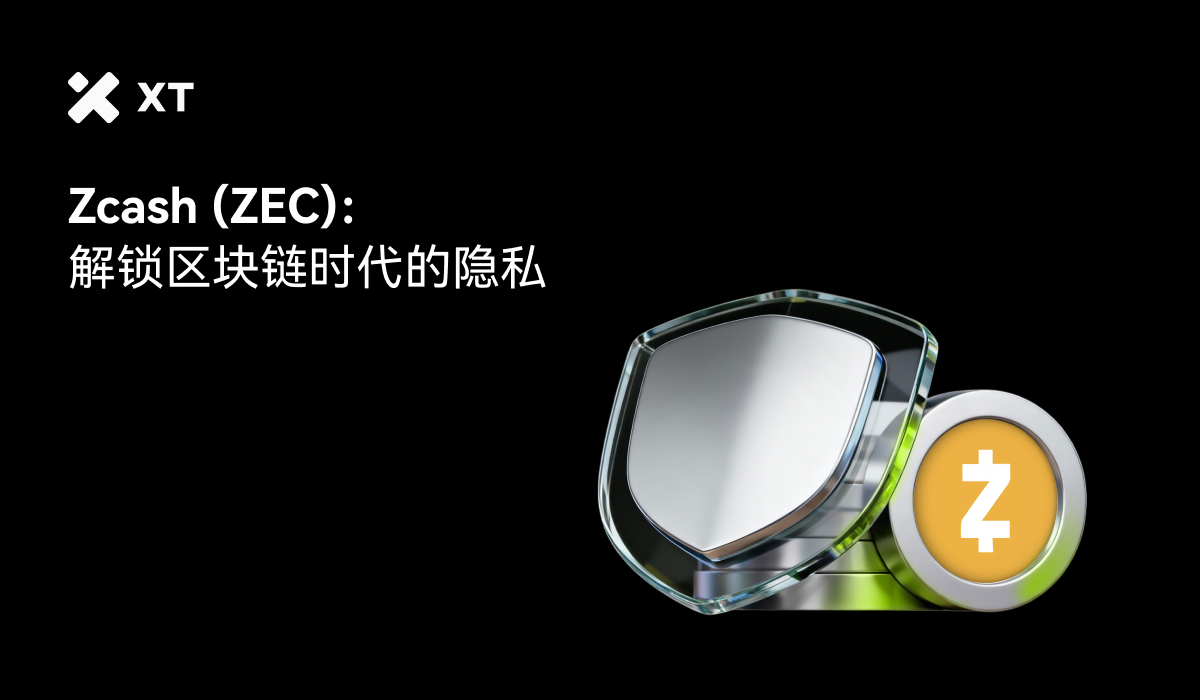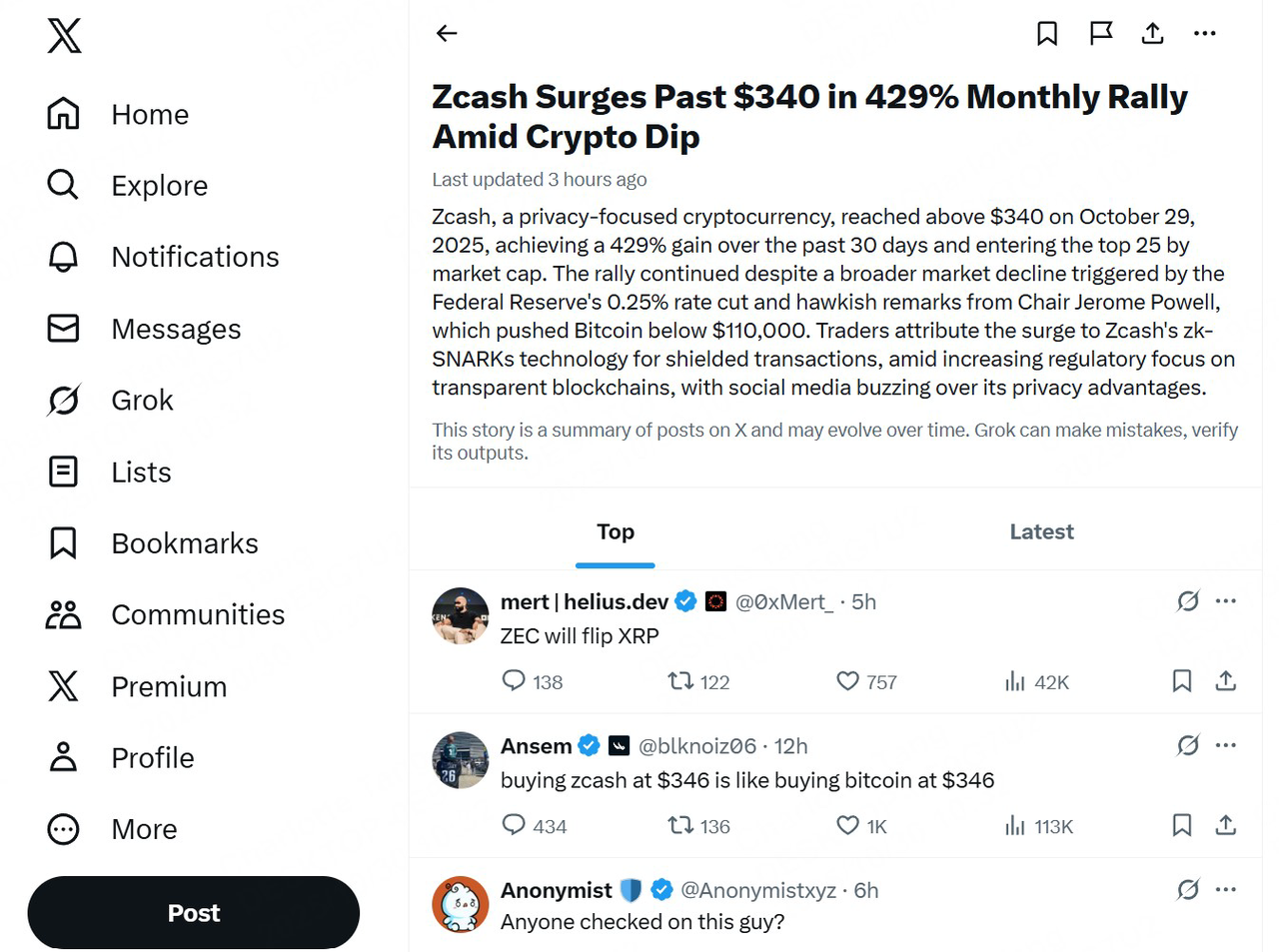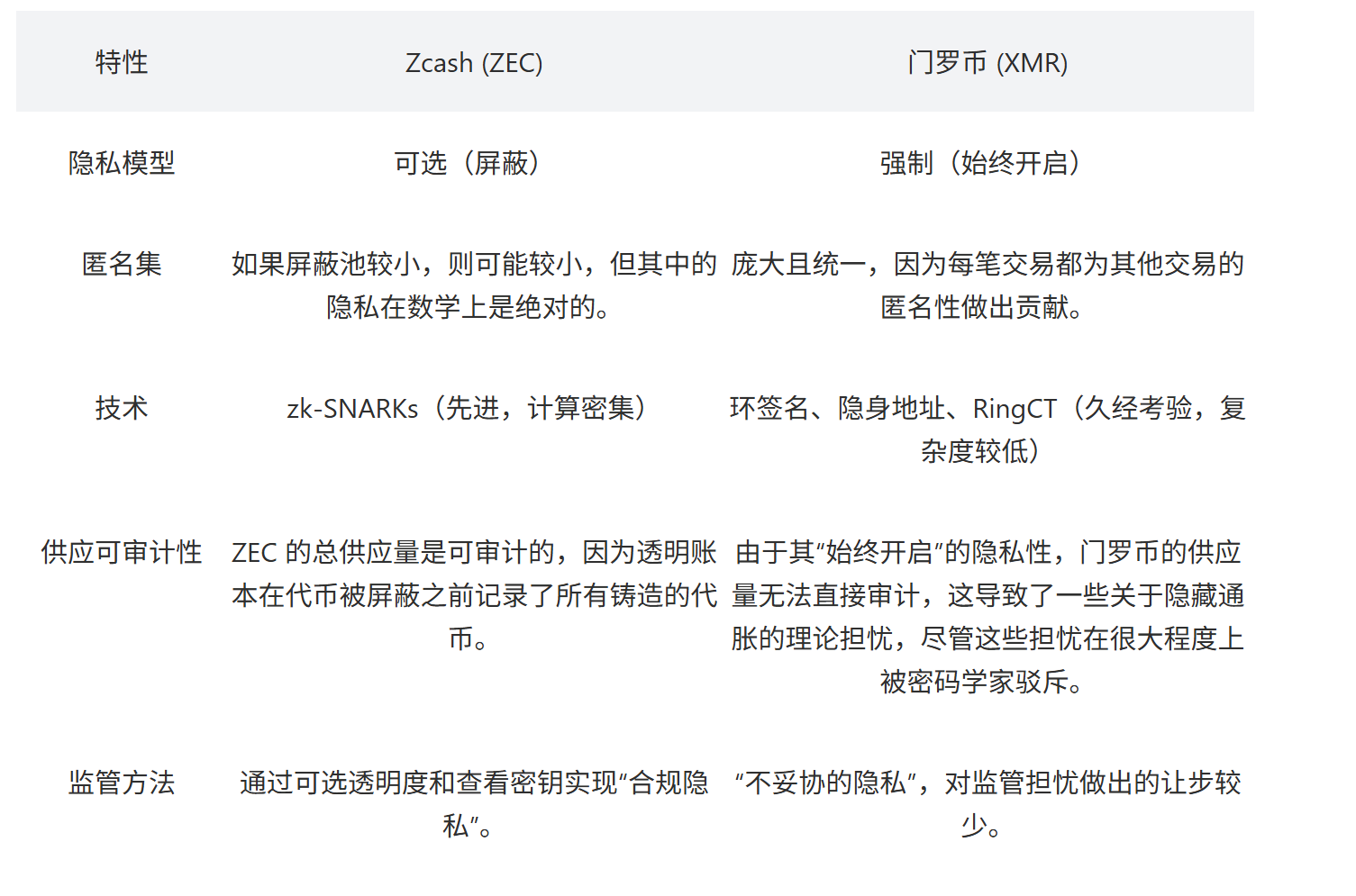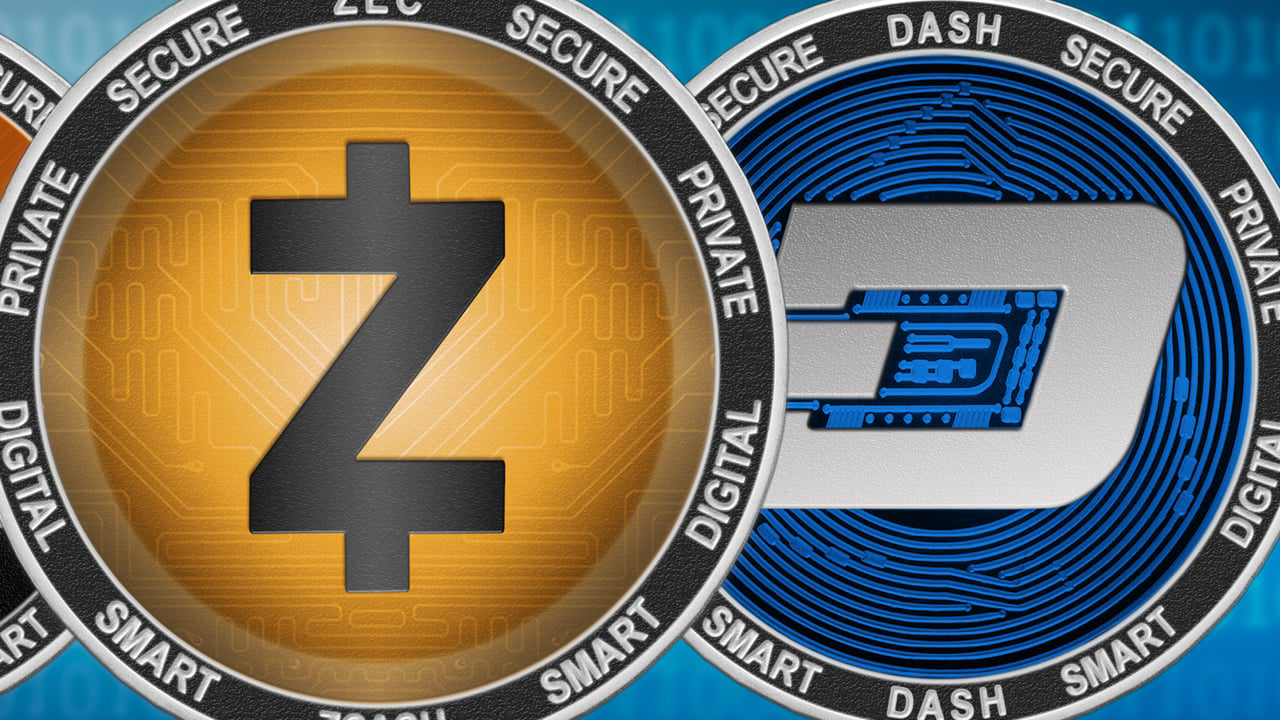In the vast world of digital assets, privacy-focused cryptocurrencies occupy a unique and often controversial space. They provide solutions to the inherent transparency issues of public ledgers like Bitcoin, where every transaction is traceable. Zcash (ZEC) is one of the pioneers in this field, bringing groundbreaking cryptographic principles to the forefront of blockchain discussions.
For those well-versed in blockchain technology, Zcash is not just another altcoin; it is a testament to the power of zero-knowledge proofs. However, its development history has been marked by extreme volatility, technological evolution, and fierce competition. This article will delve into Zcash's price history, explore the factors influencing its market valuation, and compare its technology and market position with its main competitors—Monero (XMR) and Dash.

The Origins of Zcash: Achieving Privacy Through Advanced Cryptography
Technical Overview
Zcash is recognized as the first viable project to implement Zero-Knowledge Proofs on a public blockchain. It is based on Bitcoin's UTXO model and introduced zk-SNARKs (Zero-Knowledge Succinct Non-Interactive Arguments of Knowledge) technology for the first time—this cryptographic structure allows the verifier to confirm the validity of a transaction without disclosing its content.
In traditional blockchains like Bitcoin, all transaction details (including sender, receiver, and amount) are fully public, achieving transparency but lacking privacy. Zcash's zk-SNARK system replaces information transparency with mathematical correctness proofs. Each privacy transaction generates a cryptographic proof to verify the transaction's legitimacy while concealing all related details. The network only verifies the correctness of the proof without needing to know "who paid whom."
Technically, Zcash supports two types of addresses:
- Transparent addresses (t-address): Similar to Bitcoin, transaction data is public.
- Private addresses (z-address): Utilizes zk-SNARK technology to hide transaction information.
Users can freely transfer between the two address types, achieving selective privacy. This dual-address model strikes a balance between privacy and compliance: by using a viewing key, users can open up some transaction data when regulatory or auditing needs arise.
Zcash has undergone significant protocol upgrades in recent years, such as Halo 2 and Orchard (NU5), which completely eliminated the early zk-SNARK's reliance on "trusted setup." The new recursive proof architecture enhances system scalability and lays the groundwork for cross-chain privacy interoperability and light client verification, supporting future Web3 privacy infrastructure and private DeFi modules.
Economic Model
Zcash adopts the same total supply cap of 21 million coins as Bitcoin and undergoes a block reward halving every four years. However, its distribution mechanism differs to ensure ongoing funding for development. The early version established a Founders' Reward, allocating 20% of mining rewards to early developers, investors, and the Electric Coin Company (ECC). After community governance improvements, this mechanism evolved into a Development Fund, continuing to allocate 20% of block rewards to ECC, the Zcash Foundation, and community-funded projects.
This mechanism ensures the project's research-oriented innovation can operate sustainably, allowing zk-SNARK technology development, mobile SDK maintenance, and governance operations without relying on external donations. As of 2025, Zcash's block reward is 3.125 ZEC per block, creating a long-term incentive balance among miners, developers, and the community.
In terms of economic function, ZEC serves as both a medium of exchange and a privacy-focused token. Unlike Bitcoin, which primarily relies on scarcity and adoption to drive value, ZEC's long-term value is more dependent on the elasticity of privacy demand—i.e., the intensity of users' and institutions' real need for transaction confidentiality.
On-chain data shows that from 2020 to 2025, the adoption rate of privacy transactions has continued to rise and is positively correlated with ZEC's price performance. This indicates a market shift from "privacy is a niche preference" to "privacy is a core value," giving Zcash stronger resilience and lasting competitiveness in an environment of increasing regulation and blockchain surveillance.
Decoding Zcash (ZEC) Price History: A Story of Peaks and Valleys
ZEC's price history is a compelling case study of the dynamics of the cryptocurrency market, influenced by early speculation, technological milestones, broader market cycles, and ongoing inflation concerns.
Explosive Launch and Subsequent Correction (2016-2017)
The launch of Zcash was one of the most anticipated events in crypto history. The hype surrounding its zk-SNARK technology was immense. This led to extreme supply-demand imbalances in the first few hours of trading. Due to a slow-start mining mechanism, the available coins were very few, causing initial prices on some exchanges to skyrocket to absurd levels, briefly trading at thousands of dollars each.
This initial peak was unsustainable and purely speculative. As more ZEC entered circulation, the price sharply corrected, falling below $50 by early 2017. This period established a pattern of high volatility that would define ZEC in the following years. In the first half of 2017, as the market began to understand its fundamentals beyond the initial hype, ZEC traded within a range, building a foundation.
Bull and Bear Markets of 2017-2018
Like most crypto markets, ZEC experienced a parabolic rise at the end of 2017 and early 2018. It surged from under $300 to an all-time high of around $900 in January 2018. This spike was driven by overall market euphoria and growing interest in privacy-centric assets.
However, the subsequent bear market was brutal for ZEC, arguably more severe than for many other top assets. Throughout 2018 and 2019, the price plummeted, eventually falling below pre-bull market levels. Several factors contributed to this prolonged slump:
- Founders' Reward Inflation: Zcash launched with a "Founders' Reward," allocating 20% of mining rewards to ECC, the Zcash Foundation, and other early stakeholders for the first four years. While intended to fund development, this created persistent selling pressure in the market as recipients liquidated ZEC to cover operational costs. This ongoing supply inflation severely suppressed prices.
- Low Adoption of Shielded Transactions: Despite its strong privacy features, most transactions on the Zcash network remained transparent. The computational intensity required to create shielded transactions made them slower and more expensive, leading most users to default to using t-addresses. This drew criticism for Zcash's failure to realize its primary use case.
- Regulatory Fears: Privacy coins have always been overshadowed by the potential for regulatory crackdowns. Some exchanges in certain jurisdictions began delisting ZEC and other privacy coins due to concerns from financial regulators. This reduced liquidity and investor confidence.
Halving and Post-2020 Performance
In November 2020, Zcash experienced its first halving, reducing the block reward from 12.5 ZEC to 6.25 ZEC. This event also marked the end of the initial Founders' Reward, replaced by a new development fund that receives 20% of block rewards but at a new, lower rate. This significantly reduced the inflation and selling pressure that had plagued the coin for four years.
The halving, combined with the bull market of 2021, helped ZEC recover some ground. The price rebounded from a low of around $50 at the end of 2020 to over $300 in May 2021. This period also witnessed significant technological advancements. ECC focused on improving the usability of shielded transactions, ultimately launching the Halo Arc update, which included a unified address system and set shielded transactions as the default in supported wallets.
Despite these improvements, ZEC struggled to keep pace with Bitcoin and other major altcoins in the following years. Since its peak in 2021, it entered a prolonged downtrend, facing ongoing market skepticism and competition. However, in 2025, Zcash made headlines with an astonishing 400% rebound, marking a resurgence of interest and optimism in privacy-focused cryptocurrencies. This dramatic surge may reflect a shift in attitudes toward blockchain privacy, significant advancements in Zcash's technology, or speculation on new use cases and adoption. The 2025 rebound powerfully reminds us that when conditions are ripe, ZEC has immense potential and volatility to capture the imagination of crypto investors.

Key Factors Influencing ZEC's Value
Understanding ZEC's price requires looking beyond typical market cycles. Several unique factors are at play.
- Adoption of Shielded Transactions: Zcash's value proposition is directly tied to its privacy features. The percentage of fully shielded transactions is a key indicator of network health. An increase in z-address adoption will validate its core use case and may positively impact investor sentiment. The recent shift to default shielding is a crucial step in this direction.
- Regulatory Environment: Zcash and its peers are highly sensitive to regulatory news. Any hints of blanket bans or forced delistings from major economies could trigger sharp price declines. Conversely, a framework accommodating privacy-enhancing technologies (PETs) could be a major catalyst. ECC has proactively engaged with regulators to explain how Zcash's "view key" enables compliant privacy, but concerns remain.
- Development and Innovation: The Electric Coin Company's continued ability to push the frontier of zero-knowledge cryptography is crucial. Transitioning from zk-SNARKs to more advanced Halo proof systems (which do not require trusted setups) is an important milestone. Future upgrades that can enhance performance, reduce computational costs, and improve privacy will be key to maintaining relevance.
- Inflation and Token Economics: Zcash follows the same supply schedule as Bitcoin, with a total supply cap of 21 million coins and halving every four years. The new development fund structure is less inflationary than the original Founders' Reward, but the market remains sensitive to any selling pressure from funded entities.
- Competitive Landscape: Zcash does not operate in a vacuum. Its performance is closely tied to that of other privacy coins, particularly Monero.
Comparative Analysis: Zcash vs. Privacy Coin Competitors
To fully grasp Zcash's position, we must compare it with its main competitors: Monero (XMR) and, to a lesser extent, Dash.
Zcash (ZEC) vs. Monero (XMR)

Monero is widely regarded as the king of privacy coins, and the comparison between ZEC and XMR is one of the most classic debates in the crypto space. They offer privacy through fundamentally different cryptographic methods.
Technology:
- Zcash (ZEC): Implements optional, high-intensity privacy using zk-SNARKs. Transactions are either fully transparent (t-to-t) or completely private (z-to-z). For shielded transactions, privacy is absolute, but not enforced across the network.
- Monero (XMR): Uses a multi-layered approach that is mandatory for all transactions. It combines ring signatures (to hide the sender), stealth addresses (to hide the receiver), and RingCT (Ring Confidential Transactions) (to hide the amount). This creates a large anonymous set for each transaction, making it difficult to trace the source.
Key Differences and Trade-offs:

Market Performance and Adoption:
Historically, Monero has maintained a more stable market capitalization and has seen broader adoption in dark web markets—a controversial but real-world stress test for privacy. This is primarily because its privacy is enforced by default, leaving no room for user error.
Zcash's optional privacy is both an advantage and a disadvantage. It makes the coin more acceptable to exchanges and regulators, but it also fragments its anonymous set and has led to low adoption rates for shielded transactions over the years. While recent upgrades aim to address this issue, Monero has a significant lead in establishing itself as the default choice for untraceable transactions.
Zcash (ZEC) vs. Dash (Dash)

Dash is another contemporary product of Zcash, but its approach to privacy is much lighter and is generally not viewed as comparable to ZEC or XMR by privacy purists.
Technology:
- Dash: Features an optional privacy function called "PrivateSend." It uses a mixing technique (CoinJoin) through a network of masternodes. Inputs from multiple users are combined into a single transaction and then redistributed, obscuring the original transaction flow.
- Zcash: As mentioned, uses cryptographic proofs (zk-SNARKs) to completely shield transaction data.
Key Differences:
The privacy offered by Dash's PrivateSend is probabilistic rather than cryptographic. It relies on trust in the non-collusion of the masternode network and having enough participants in the mixing round to provide meaningful cover. It is significantly weaker than the cryptographic guarantees provided by Zcash's shielded transactions.
While Dash was an early innovator in privacy and governance, the market has largely come to view it more as a payment-focused cryptocurrency with optional mixing features. In contrast, Zcash fundamentally serves as a privacy protocol. Therefore, Zcash competes more directly with Monero for the title of "true privacy," while Dash has carved out a different niche.
Trading ZEC on XT.COM: Spot and Futures Markets
If you wish to capitalize on Zcash's market volatility, consider trading ZEC directly on XT.COM. The exchange offers flexible options for every trader:
- ZEC Spot Trading: With high liquidity, buy and sell the ZEC/USDT trading pair instantly. Trade ZEC/USDT spot on XT.COM
- ZEC Perpetual Contracts: Go long or short on ZEC to capture opportunities in both bull and bear markets. Trade ZEC/USDT perpetual contracts on XT.COM
Whether you are an experienced investor or a newcomer to the crypto market, XT.COM provides secure, efficient, and user-friendly tools to engage in Zcash trading.
The Future of Zcash: Challenges and Opportunities
Zcash stands at a crossroads. The technology behind it is more powerful and user-friendly than ever. The shift towards a default shielding paradigm through the Halo Arc update is a significant step toward realizing its original vision. The ECC development team continues to be at the forefront of zero-knowledge research and plans to further enhance scalability and performance.
However, significant challenges remain.
- Overcoming Market Perception: Zcash needs to shed its reputation for underperformance. This can only be achieved by continuously increasing the adoption rate of shielded transactions, which will demonstrate its utility and attract new investment.
- Navigating the Regulatory Maze: The global regulatory landscape for privacy coins remains the biggest external threat. ECC's proactive engagement and "compliant privacy" strategy may be its best defense, but the outcomes are far from certain.
- Winning the Privacy War: In a world where Monero's mandatory privacy has become the standard for many, Zcash must convince users that its powerful but optional model is the superior long-term solution, providing both unassailable privacy and flexible transparency.
The ultimate bullish case for Zcash lies in a future where digital financial privacy is not just a niche demand but a mainstream necessity. If individuals and institutions begin to seek ways to shield their financial activities on public blockchains, Zcash's complex, auditable, and regulatory-friendly technology may position it as the preferred solution. Its journey exemplifies the slow and arduous process of building and deploying revolutionary technology. Whether this technology will translate into long-term market success remains one of the most compelling open questions in the cryptocurrency space.
About XT.COM
Founded in 2018, XT.COM is a leading global digital asset trading platform, now boasting over 12 million registered users and operating in more than 200 countries and regions, with an ecosystem traffic exceeding 40 million. XT.COM's cryptocurrency trading platform supports over 1300 quality coins and 1300 trading pairs, offering diverse trading services such as spot trading, margin trading, and futures trading, along with a secure and reliable RWA (Real World Assets) trading market. We adhere to the philosophy of "Exploring Crypto, Trusting Trading," committed to providing global users with a safe, efficient, and professional one-stop digital asset trading experience.
免责声明:本文章仅代表作者个人观点,不代表本平台的立场和观点。本文章仅供信息分享,不构成对任何人的任何投资建议。用户与作者之间的任何争议,与本平台无关。如网页中刊载的文章或图片涉及侵权,请提供相关的权利证明和身份证明发送邮件到support@aicoin.com,本平台相关工作人员将会进行核查。




